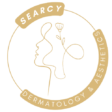Dermabrasion is a skin-resurfacing procedure that removes the outer layers of skin; when skin grows back, it is smoother and younger looking. Dermabrasion removes, as much as is possible, facial scarring caused by acne, chicken pox, injury or other conditions. Uneven pigmentation, wrinkles, sun damage, tattoos, age spots and certain kinds of skin lesions are also treated with dermabrasion, which can be performed on targeted areas of skin or the entire face. It can also be performed in combination with other treatments, such as facelifts or scar revisions, for optimal results.
Benefits of Dermabrasion
Dermabrasion can be used to treat a variety of skin conditions, including the following:
- Wrinkles
- Scars
- Chicken pox marks
- Age spots (sun-damaged skin)
- Uneven skin pigmentation
- Tattoos
- Precancerous skin patches
Dermabrasion is not effective for removing congenital marks, pigmented birthmarks, scars from burns, and certain types of moles.
The Dermabrasion Procedure
To determine whether a person is a candidate for dermabrasion, a complete medical history is taken, and overall health is assessed.
During the dermabrasion procedure, the areas of skin to be treated are cleansed and marked. The skin is frozen, typically with a cryogenic spray, and a local anesthetic is applied to numb the skin and reduce any potential discomfort. The skin is then sanded with a high-speed rotary instrument, removing the top layers of skin. Dermabrasion is performed in small sections, with the freezing spray applied to each area just seconds before the rotating brush is applied. Treatment depth is customized for each patient depending on the amount of resurfacing required.
After the layers of skin are removed, an ointment and dressing may be applied to protect the treated skin from infection and other complications. Most patients are able to tolerate treatment well, and have only minimal discomfort. Dermabrasion is performed in a doctor's office; treatment time can vary, depending on the size and location of the treatment area, from a few minutes to up to an hour. Patients are able to return home shortly afterward.
After the Dermabrasion Procedure
After the procedure, patients typically experience redness and swelling, and what feels like sunburn. There may also be some tingling, burning or aching, which can be managed with pain medication prescribed by the physician. Side effects usually last for a few days to a week; when they dissipate, patients can return to work and regular activities, although physical activity and swimming should be avoided for a few weeks. Protecting the skin from sun for the first few weeks after treatment is also essential for reducing the risk of complications and achieving desired results.
The results of dermabrasion become apparent as redness and swelling subside, although it may take several months to see full results. Skin regrowth usually begins after 5 to 8 days, and patients begin to see smoother skin that has an overall improved appearance. Results vary depending on the individual and the condition being treated.
Risks of Dermabrasion
Although rare, risks associated with dermabrasion include pigmentation changes, infection, scarring, keloids and enlarged skin pores.
Dermabrasion can be performed at almost any age, with light-skinned people achieving more successful results than those with darker skin. Before undergoing dermabrasion, patients with active acne should have existing lesions treated to reduce the risk of infection.
